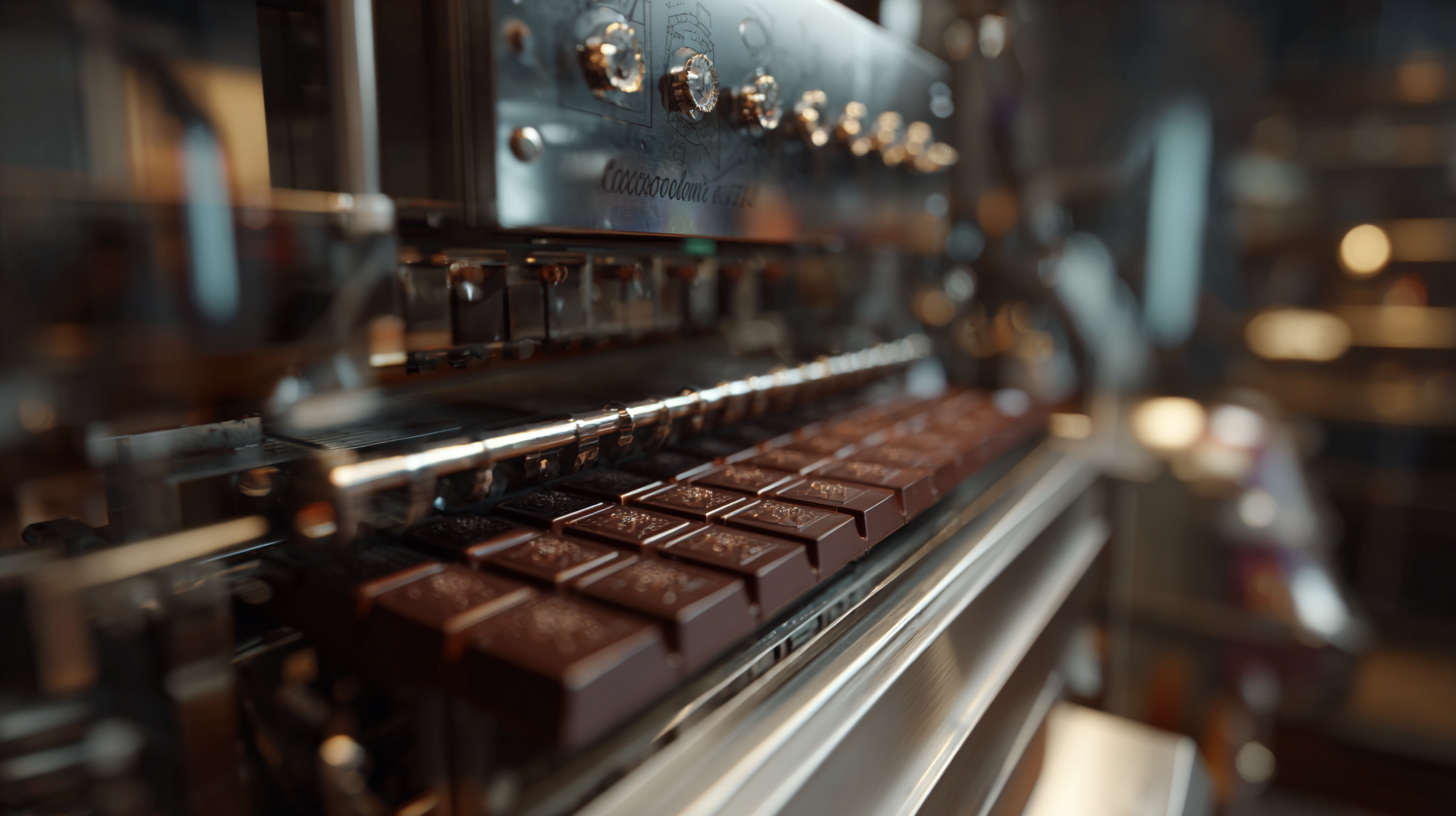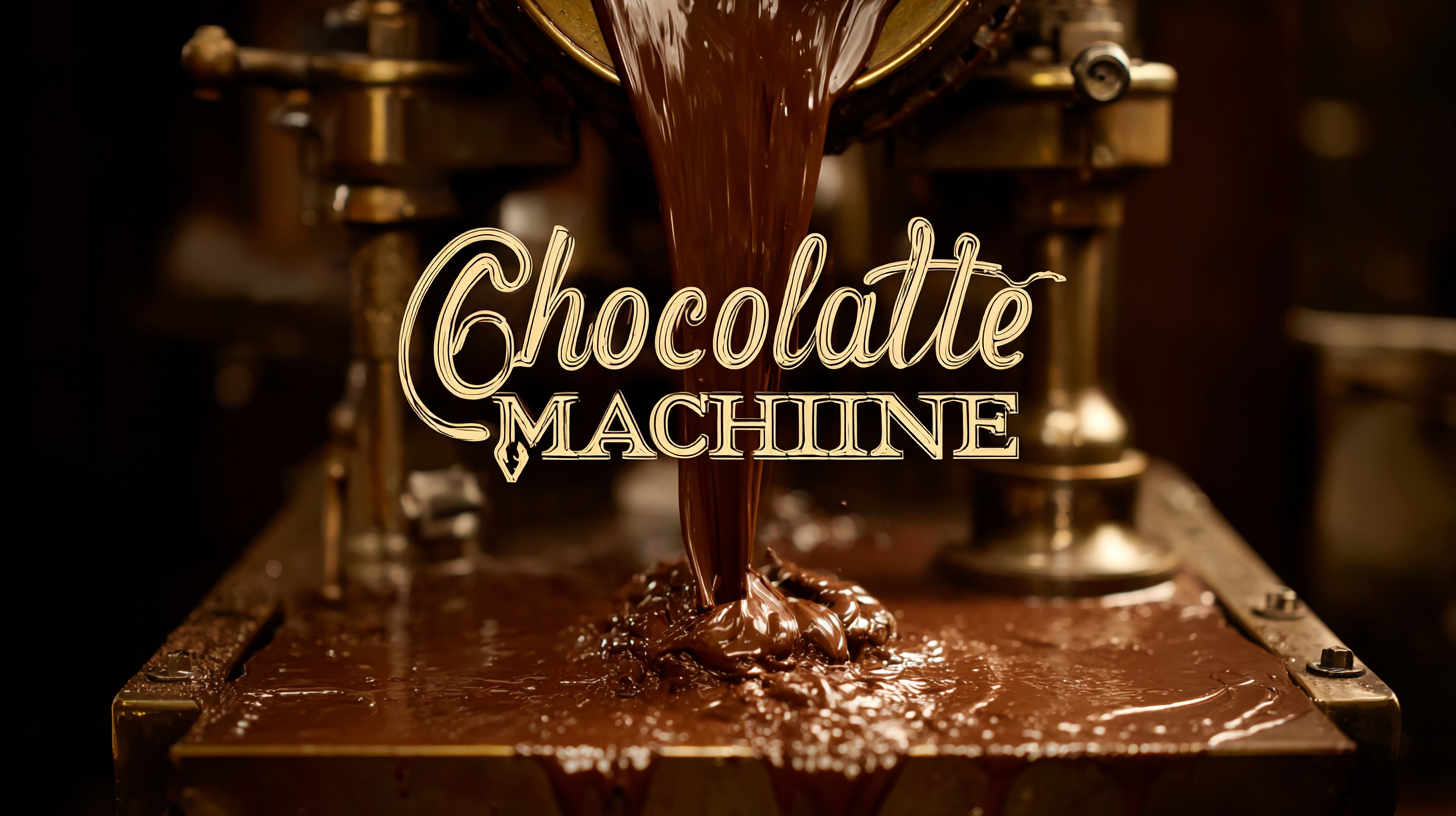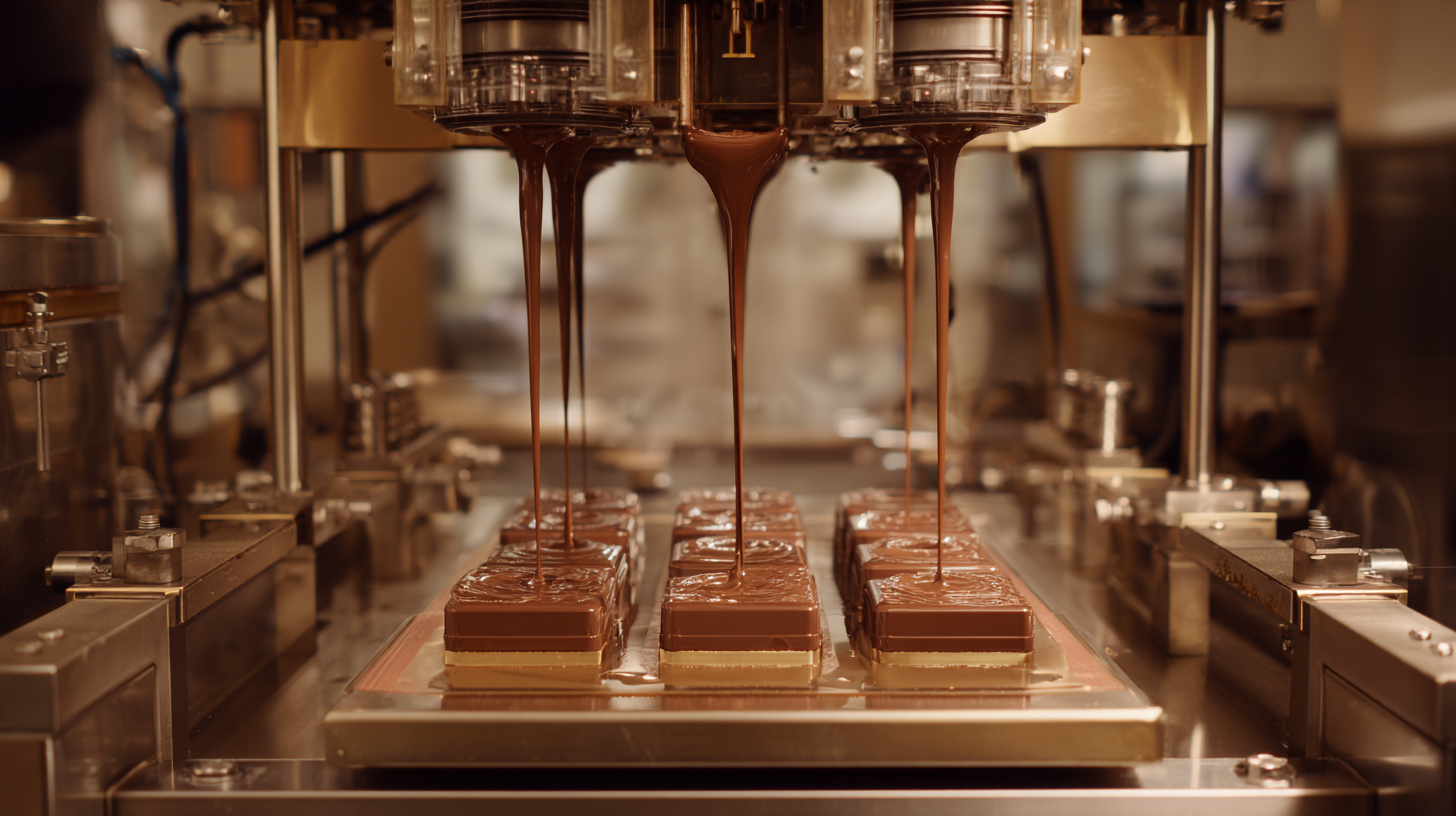Exploring the Top Alternatives to the Best Chocolate Machine for Your Business
In recent years, the demand for high-quality chocolate products has surged, propelling the chocolate industry to a remarkable growth rate, projected to reach $161 billion by 2024 according to a recent market analysis report. As businesses strive to meet consumer expectations, investing in a reliable chocolate machine has become essential. However, with numerous options available, selecting the right equipment can be daunting. Alternatives to the best chocolate machines are now garnering attention as they offer innovative features, cost-efficiency, and versatility, enabling both established companies and startups to enhance their production capabilities. By exploring these alternatives, businesses can find solutions that not only meet their specific production needs but also position them competitively within a rapidly evolving market.

The Importance of Choosing the Right Chocolate Machine for Your Business Needs
Choosing the right chocolate machine is pivotal for businesses aiming to streamline production and enhance product quality. The perfect machine not only fits the unique needs of your operations but also aligns with your brand's vision. With a plethora of options available, businesses must assess their specific requirements, such as production volume, type of chocolate processed, and desired automation level. The implications of these choices can affect everything from manufacturing efficiency to product taste, ultimately influencing customer satisfaction and brand loyalty.
Furthermore, factors like ease of maintenance, energy efficiency, and cost-effectiveness should also be taken into account when selecting a chocolate machine. A well-chosen machine can help reduce operational costs in the long run, while minimizing downtime due to repairs or inefficiencies. By prioritizing these elements, businesses can ensure they are investing in a chocolate machine that not only meets their immediate needs but also supports their growth and innovation goals in the competitive chocolate market.
Comparing Chocolate Machine Alternatives for Businesses
Understanding Key Technical Specifications of Chocolate Machines
When it comes to selecting a chocolate machine for your business, understanding the key technical specifications is crucial. Chocolate machines come in various configurations, each designed for specific production capacities and chocolate types. For instance, the global chocolate machinery market is projected to grow by 4.5% annually, reaching approximately $4.2 billion by 2025. This growth is driven by the increasing demand for artisanal and high-quality chocolate products, which necessitates advanced machinery that can guarantee precision and consistency.
Key specifications to consider include temperature control systems, production speed, and capacity. Machines equipped with advanced temperature regulation can maintain the optimal melting temperature for chocolate, typically around 40-50°C for dark chocolate. Additionally, production speed, measured in kilograms per hour, can significantly impact efficiency. For instance, a machine with a production capacity of 150 kg/h can meet the demands of a medium-sized production operation, while larger businesses may require machines that produce upwards of 500 kg/h. Investing in a versatile machine that meets these technical specifications can streamline production processes and enhance product quality.

Comparative Analysis: Top Chocolate Machine Alternatives in the Market
As the global demand for chocolate continues to rise, businesses are increasingly seeking efficient alternatives to traditional chocolate machines. According to a market research report by Custom Market Insights, the global cocoa and chocolate market is projected to grow significantly, reaching a size of USD 10.86 billion by 2033, with a compound annual growth rate (CAGR) of 6.24%. This growing demand highlights the necessity for innovative production solutions that can cater to both large-scale operations and artisanal chocolate makers.

In addition, the premium chocolate segment is expected to witness robust growth, with projections indicating a surge from USD 97.54 billion in 2024 to USD 198.69 billion by 2032, at a remarkable CAGR of 9.3%. This trend reflects a shift in consumer preferences towards high-quality chocolate products, emphasizing the importance for businesses to adopt advanced chocolate machines that can enhance production capabilities while maintaining product quality.
Given the projected expansion of the chocolate confectionery market, anticipated to reach USD 167.1 billion by 2025, exploring alternative chocolate machines offers businesses a competitive edge in a thriving industry.
Evaluating Production Capacity and Efficiency of Chocolate Machines
When considering alternatives to the best chocolate machines for your business, it's crucial to evaluate production capacity and efficiency. The right machine can significantly impact your production volume and overall operational effectiveness.
For instance, some machines are designed to handle smaller batches, making them ideal for artisanal chocolatiers, while others boast larger capacities that suit mass production environments. Assessing your specific needs will help you determine the ideal production capacity that aligns with your business goals.
Additionally, efficiency plays a vital role in the long-term success of any chocolate manufacturing operation. Machines that minimize energy consumption and reduce waste can not only lower operational costs but also enhance product quality.
Look for machines equipped with advanced technology that streamlines processes, such as automatic tempering, molding, and cooling systems. By focusing on these key factors, you can select a chocolate machine that not only meets your production requirements but also ensures smooth and efficient operations, leading to improved profitability.
Cost-Benefit Analysis of Using Advanced Chocolate Machinery
When considering the cost-benefit analysis of using advanced chocolate machinery for your business, it's crucial to weigh both the initial investment and the long-term advantages it offers. Advanced chocolate machines not only improve production efficiency but also enhance product consistency, thereby increasing customer satisfaction and retention. The integration of smart technology can facilitate real-time monitoring of production processes, enabling businesses to make prompt adjustments that can save time and reduce waste.
Tips for maximizing the benefits of your chocolate machinery include conducting regular maintenance checks to ensure optimal performance and staying updated on the latest technological advancements. Additionally, consider using 3D printing technology for packaging solutions. Although it might not be the first application that comes to mind for chocolate manufacturers, 3D printing can revolutionize how you package your products, offering customization while reducing waste.
Moreover, investing in machinery with AI capabilities can further elevate your operations, enhancing processes like inventory management and predictive maintenance. Businesses that leverage these technologies not only prepare for the future but also set themselves apart in a competitive market, benefiting from improved efficiency and reduced operational costs.